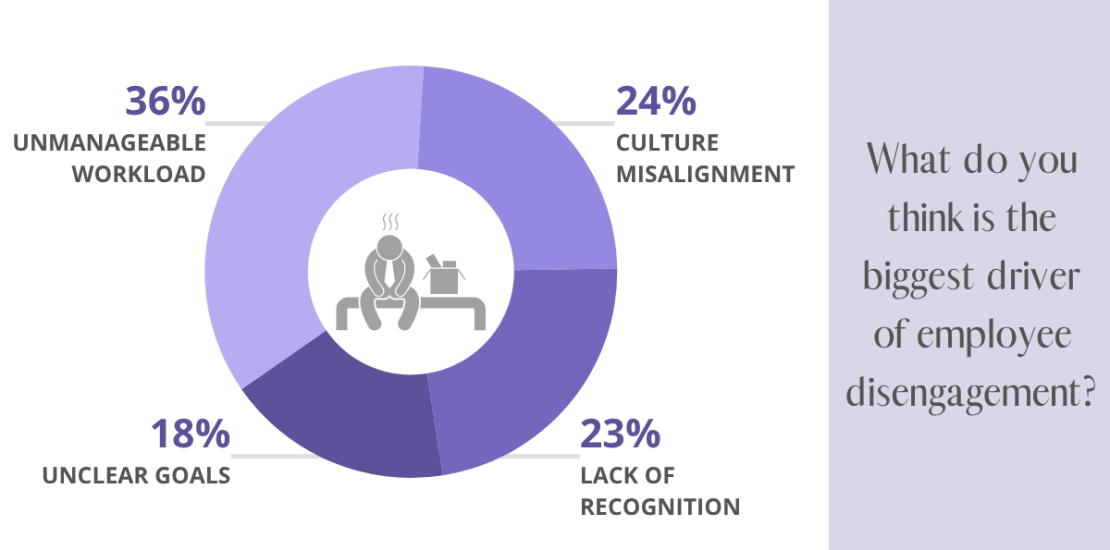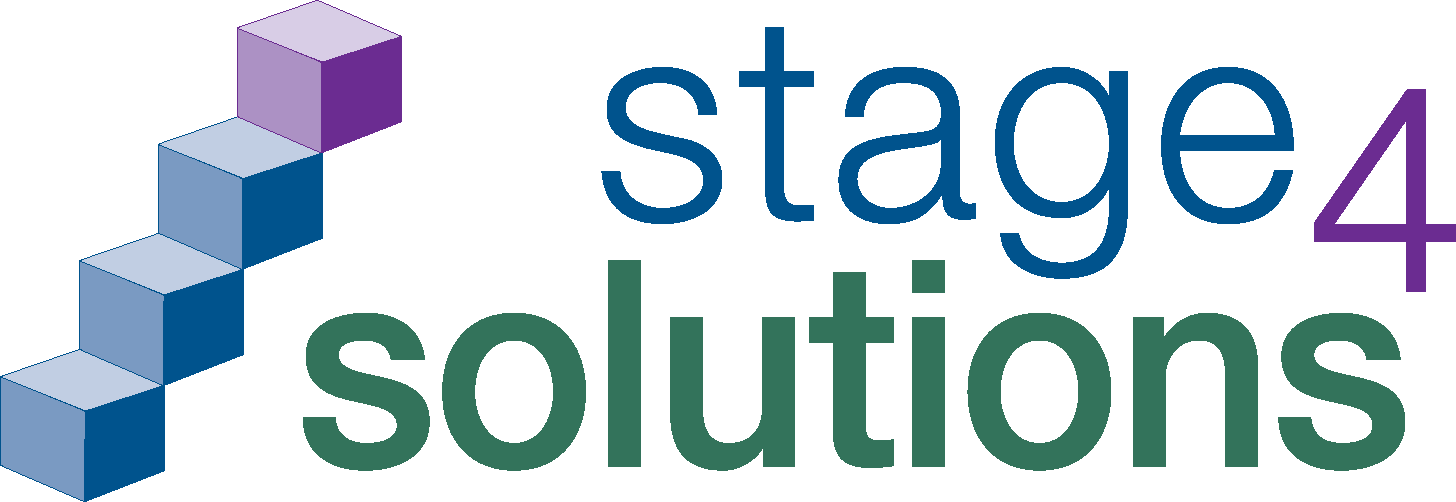From Stagnation to Strength: Strategies That Boost Employee Engagement
- July 22, 2025
- Posted by: Stage 4 Solutions
- Category: Blog

Employee engagement doesn’t vanish overnight, it erodes slowly, worn down by daily friction that goes unaddressed. When leadership appears inconsistent, goals lack clarity, or expectations feel unrealistic, employees begin to disconnect. Over time, these small moments of confusion or frustration can compound, leaving individuals feeling undervalued, overworked, and uncertain of their purpose within the organization. In the current environment of layoffs and AI impacting many jobs, it becomes more critical that company leadership focus on employee engagement and confidence.
The State of the Global Workplace: 2025 report from Gallup reveals a decline in employee engagement around the world. In 2024, it dropped from 23% to 21%, marking only the second decrease in over a decade, the last occurring during the height of the COVID-19 pandemic. Gallup estimates this deterioration cost the global economy $438 billion in lost productivity. Manager engagement fell to 27%, while individual contributor levels remained flat at 18%. These numbers reflect growing concerns around workforce connection, leadership effectiveness, and overall organizational health.
Engagement is more than a nice-to-have, it’s a competitive advantage. For managers, this trend highlights the urgent need to not just attract top talent, but to actively foster an environment where employees feel connected, seen, and motivated. To better understand the factors that cause people to feel less invested in their work, we polled our community for their insights:
What do you think is the biggest driver of employee disengagement? (Single answer)
- Unmanageable workload: 36%
- Culture misalignment: 24%
- Lack of recognition: 23%
- Unclear goals: 18%
Unmanageable Workload: Rebalancing to Prevent Burnout
The top-voted response in our poll was unmanageable workload, with over a third of respondents selecting it as the leading cause of disengagement. This reflects a common workplace reality: talented individuals stretched beyond capacity, resulting in burnout and turnover. We all juggle heavy workloads, but when the demands become overwhelming, the impact extends beyond the office and into every part of our lives.
Just as in our poll, according to Gallup, employees experiencing frequent burnout cite unreasonable work demands as the top cause. Chronic overload reduces engagement and increases turnover.
What managers can do: Regularly check in on capacity and priorities. Promote realistic goals, redistribute responsibilities during crunch times, rebalance workloads where appropriate, delegate strategically, and encourage boundary-setting. For more specific strategies professionals are using to combat burnout and regain balance, please read our article: Recharging for Results: How Professionals Are Beating Burnout.
Culture Misalignment: Aligning Values to Deepen Commitment
Culture misalignment came in second in our poll, selected by nearly one in four respondents. This reinforces what we have seen across many organizations: when employees don’t feel aligned with the company’s values, it becomes difficult to stay engaged, regardless of role, tenure, or performance.
Culture misalignment often shows up subtly, in how decisions are made, how feedback is handled, or how teams operate. Over time, these disconnects erode trust and commitment. When people don’t see shared values in action, they feel like outsiders in their own workplace.
What managers can do: Clearly communicate company values and model them in decision-making. It is important to be transparent about culture and culture expectations during hiring processes to bring the most aligned candidates to the organization and then, keep them engaged. Employees stay engaged when their values align with those of the organization. Build belonging by communicating a clear mission and reinforcing it with actions. Explore how teams are finding meaning and momentum.
Lack of Recognition: Praise as a Performance Multiplier
23% of respondents identified lack of recognition as the leading cause of disengagement. This speaks to a common experience across workplaces: when consistent effort goes unnoticed, motivation fades.
Recognition isn’t about grand gestures, it is about showing people that their work matters. When contributions are ignored, employees begin to question whether their time and energy make a difference. Over time, this silence can lead to detachment and lower performance.
What managers can do: Acknowledge both big wins and daily contributions. Make validation timely, specific, and personalized, whether public or private. Recognize contributions. Respecting performance doesn’t need to be elaborate; it needs to be consistent. A thank-you, a shoutout, or visible appreciation of effort can restore motivation and pride. For actionable ways leaders can use recognition to boost morale and drive performance, read our article, Recognition: A Key Pillar of Workplace Motivation.
Unclear Goals: Clarity as a Catalyst for Engagement
18% of respondents pointed to unclear goals as a key reason for disengagement. When employees don’t understand what’s expected of them or how their work connects to broader objectives, it’s easy to lose focus and momentum.
Clarity is a basic but powerful driver of engagement. People want to know where they are headed, what success looks like, and how their efforts contribute to the bigger picture. Without that, even the most capable teams can feel stuck or misaligned.
We all want to know where we stand. Are we on firm ground or shifting sands? Studies show that clarity of expectations is one of the strongest predictors of performance and engagement.
What managers can do: Clarify goals and roles. Without direction, it’s hard to stay motivated. Set clear goals and reasonable timelines, revisit them regularly, and connect individual work to larger team or company objectives. Regular check-ins, clear KPIs, and shared priorities give employees a sense of progress and purpose. Explore key strategies for boosting clarity and productivity.
Sustaining Engagement Through Consistency
While culture and recognition matter, they can’t compensate for a system that demands too much, too often. In fact, all four responses in the poll reflect a breakdown in the essential conditions employees need to stay engaged: clarity, appreciation, purpose, and balance.
Employee engagement is not built on a single initiative or quarterly survey, it’s built daily. It requires a consistent environment that aligns workload with capacity, connects effort to impact, and gives people the clarity and space they need to succeed.
At Stage 4 Solutions, we believe employee engagement is a shared responsibility. It starts with leadership, but it lives in the daily experience of every team member. That’s why we work to ensure our team members have manageable workloads, flexible support, clear goals, and a culture of mutual respect.
Helping employees stay engaged isn’t just the right thing to do, it’s a strategic priority. Because when buy-in is strong, performance follows. When it’s not, even the most talented teams can struggle.
What’s working in your organization? What keeps you and your teams engaged? We would love to hear your strategies for building a workplace where people thrive.

